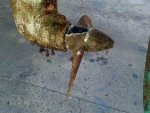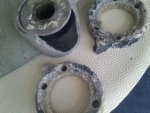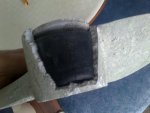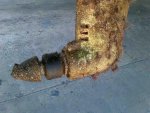savageseadog
Well-Known Member
A potential difference is created by a current flowing through a resistance. .
An electromotive force ( emf) drives the current.
Take a series of resistances connected to a battery. The current that flows is a function of the EMF of the battery and the total resistance of the circuit, including the internal resistance of the battery.
The pd you can measure across any one of the resistances is a function of the current and and the magnitude of the resistance.
"A" potential difference, which will be equal to emf if you measure across it, ie a voltage. The reason I used potential difference as a term is because we are talking about completed circuits and an electrolysis situation is more complex than simple batteries inevitably there will be an emf, a non linear resistance and a current in most circumstances.
Anyway, if there was a




